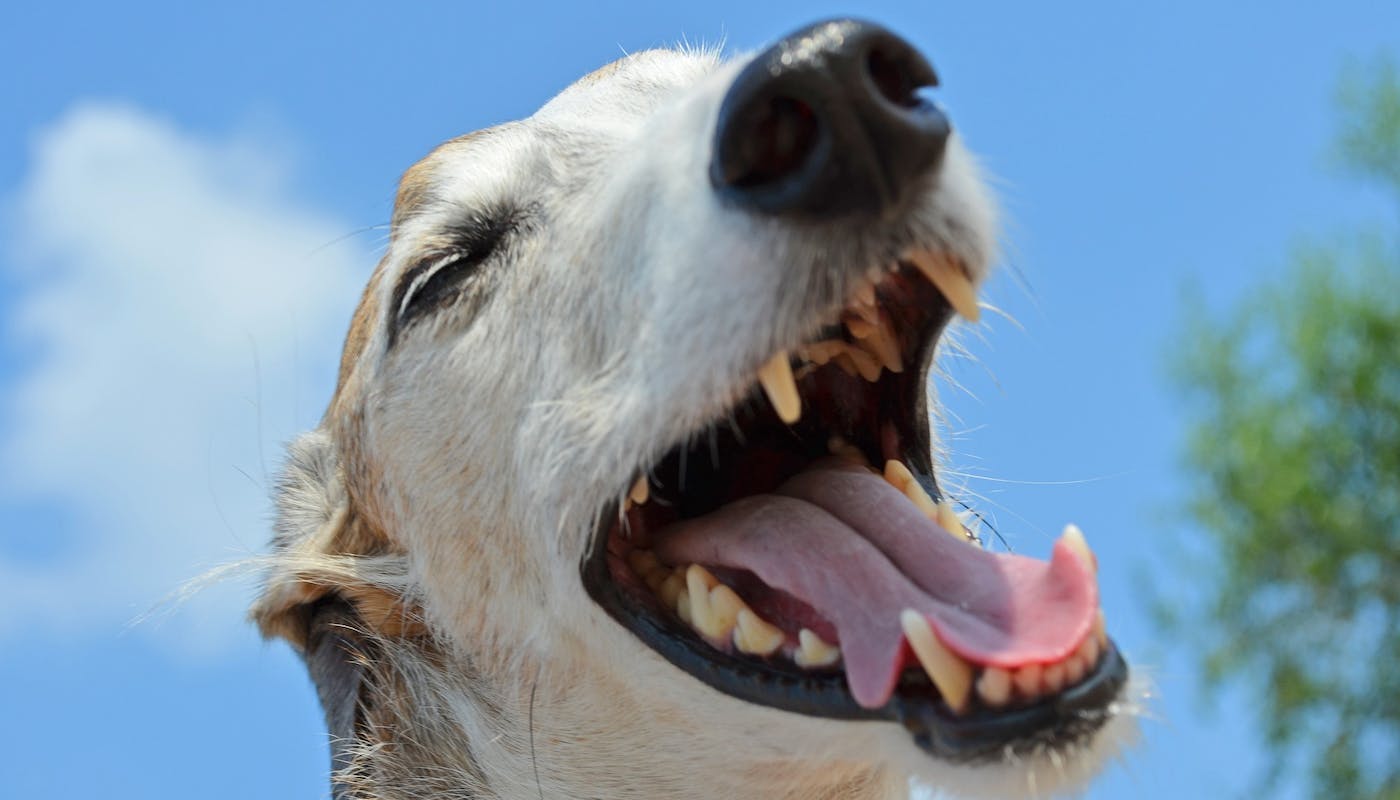Can Dogs Have Sensitive Teeth?
Can dogs suffer from sensitivity to hot and cold foods, the way that humans do? Learn more about dental health and how to help your dog to enjoy their food into old age.
What Causes Sensitive Teeth in Dogs?
Unlike human teeth, dogs’ teeth don’t become sensitive to hot or cold without an underlying reason. If your dog’s tooth seems to be sensitive, it is likely caused by gum disease or decay.
It’s worth investigating if your dog has developed any of these symptoms:
- Lower appetite. Becoming disinterested in food is a cause for concern in most dogs! Try offering your dog their favorite food and watch them eat it. You may notice they’re chewing slowly or using one side of the mouth.
- Dropping food. If your dog has pain inside the mouth, they might suddenly drop a piece of food, then pick it back up.
- Dribbling. If your dog is drooling more than usual, it might be a response to dental pain.
- Bad breath. A dental infection causes an imbalance of bacteria which can cause the breath to smell different.
- Pressing their head on the floor or pawing at their mouth. Dogs might touch or attempt to relieve the site of pain.
What happens next? You will need to consult your vet, who can organize a dental scale or x-ray to investigate the level of decay. If the decay is advanced, your vet may recommend removing teeth.
Toothbrushing Tips for Dogs
It’s estimated that only around 10% of owners regularly clean their dogs’ teeth. But around 80% of dogs suffer from dental problems as they get older. It’s becoming an important issue – but you can play a part in improving these statistics. Let’s get brushing!
It’s not easy. Brushing someone else’s teeth is never fun, whether that’s a toddler or a dog. They don’t understand what we’re trying to do or why we’re doing it and we don’t like struggling through it.
The best way to introduce your dog to the toothbrush is s l o w l y. On the first day you may only brush a couple of teeth, but you’re playing the long game. Don’t be frustrated if you didn’t get the back teeth this time. Don’t be tense if it turns into a game of tug-of-war; keep the atmosphere light so your dog won’t dread the brush!
You can begin with a finger brush (a nubby tube which fits over one finger) or a traditional dog toothbrush (designed with a long handle, and easier to get to the back of their mouths). At first you’ll just be rubbing it gently over their teeth, and getting your dog used to the idea of something in their mouth.
When they’re comfortable about having their mouth touched, introduce a little smear of doggy toothpaste. You’ll need canine toothpaste, since your human toothpaste probably contains ingredients which are toxic (like the dreaded xylitol). Doggy toothpaste is usually flavored with something delicious like liver, so your dog shouldn’t be too resistant to it.
After a few weeks of gentle practice and lots of praise, your dog should accept the toothbrush.
Really struggling with the brush? To make our lives easier, pet pharmacists have also developed an additive which is a bit like mouthwash. A few drops in the water bowl and it will get busy fighting plaque when you can’t.
